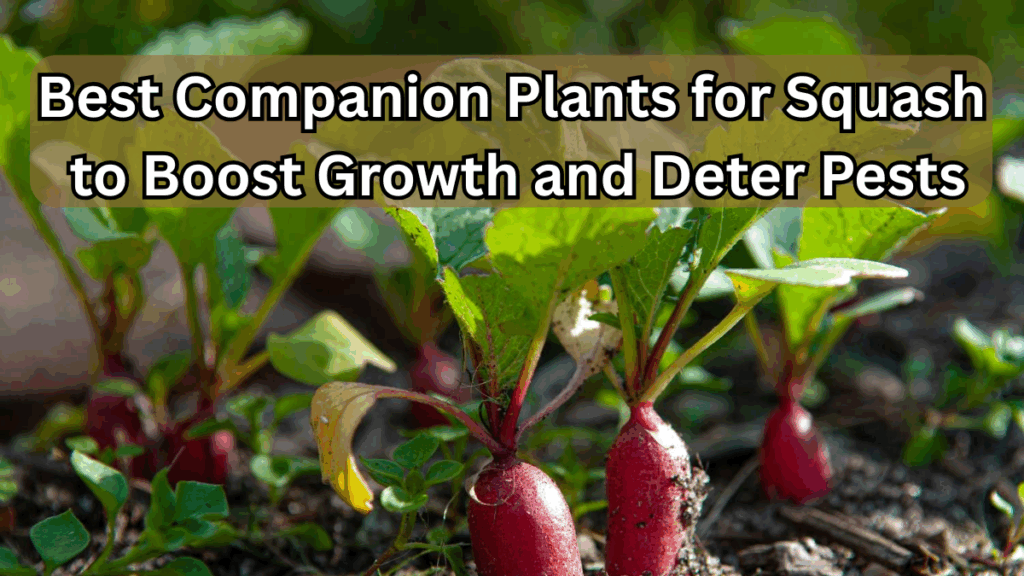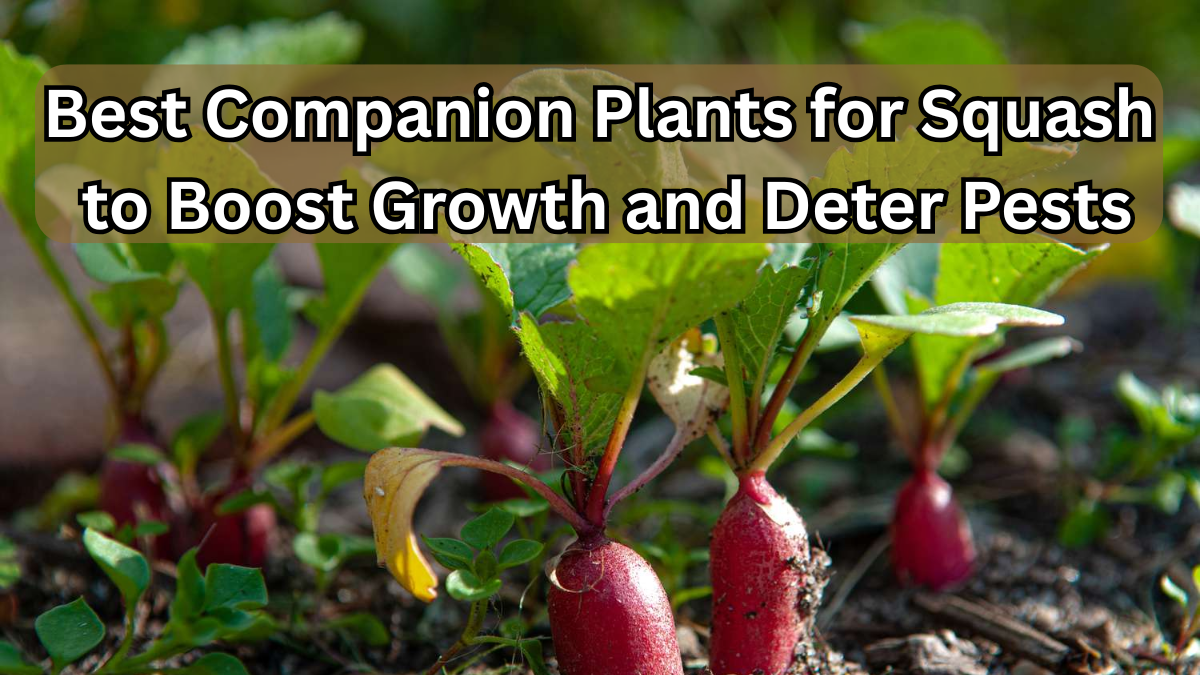Growing squash in your garden can be incredibly rewarding, but like many vegetables, squash is prone to pests and diseases. The secret to a thriving squash garden often lies in companion planting. By planting the right partners alongside your squash, you can enhance growth, improve soil health, and naturally repel pests. Here’s a guide to the best companion plants for squash.

Why Companion Plants Matter for Squash
Companion planting is more than just a gardening trend—it’s a smart approach to garden planning. Some plants help squash in various ways:
-
Pest control: Certain herbs and flowers deter harmful insects naturally.
-
Pollination support: Flowers like nasturtiums attract bees, boosting fruit production.
-
Soil enrichment: Legumes fix nitrogen in the soil, feeding your squash.
By choosing the right companions, you can reduce chemical use, save time, and encourage a more productive garden.
Top Companion Plants for Squash
Here are the most effective plants to grow alongside squash:
Corn
-
Acts as a natural trellis for vining squash varieties.
-
Provides shade that reduces soil moisture loss.
-
Protects against strong winds.
Beans
-
Nitrogen-fixing legumes enrich the soil for squash growth.
-
Grow vertically, saving space in your squash garden.
-
Attract beneficial insects.
Nasturtiums
-
Flowers repel aphids, squash bugs, and whiteflies.
-
Attract pollinators, enhancing fruit set.
-
Serve as a living mulch to retain soil moisture.
Marigolds
-
Emit natural compounds that deter nematodes and other pests.
-
Bright flowers attract beneficial insects.
-
Easy to grow and maintain.
Radishes
-
Repel cucumber beetles and other squash pests.
-
Quick-growing, allowing multiple harvests in a single season.
-
Can be interplanted between squash rows.
Plants to Avoid Near Squash
Some plants compete with squash for nutrients or attract the wrong pests. Avoid planting:
-
Potatoes (host similar pests like beetles).
-
Fennel (inhibits growth of many garden vegetables).
-
Tomatoes (can share disease issues).
Companion Planting Table for Squash
| Companion Plant | Benefits for Squash | Ideal Placement in Garden |
|---|---|---|
| Corn | Provides support and shade | Plant in rows alongside squash |
| Beans | Adds nitrogen to soil | Interplant with squash vines |
| Nasturtiums | Repel aphids, attract pollinators | Scatter near squash base |
| Marigolds | Pest control, attracts beneficial insects | Around squash perimeter |
| Radishes | Repels cucumber beetles | Between squash rows |
Tips for Successful Garden Planning with Squash
-
Spacing matters: Ensure companions don’t overcrowd squash.
-
Rotate crops: Avoid planting squash in the same spot year after year.
-
Mulching helps: Retains moisture and keeps weeds at bay.
-
Water carefully: Consistent soil moisture is key to preventing diseases.
By incorporating these strategies, your squash garden will flourish while minimizing pest problems naturally.
FAQs About Companion Plants for Squash
Q1: Can I plant any vegetables with squash?
Not all vegetables are ideal. Avoid crops like potatoes, tomatoes, and fennel that compete with squash or share pests.
Q2: How do flowers help in pest control for squash?
Flowers like nasturtiums and marigolds repel harmful insects while attracting pollinators, which increases squash yield.
Q3: Is it necessary to rotate squash plants every year?
Yes. Rotating crops reduces soil-borne diseases and prevents pest buildup, keeping your garden healthier.
Q4: Can companion planting replace chemical pesticides?
While not a complete replacement, companion planting significantly reduces the need for chemical interventions, promoting a natural pest control method.
Click here to learn more
